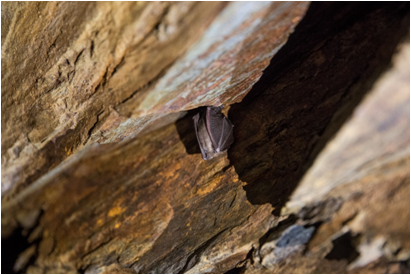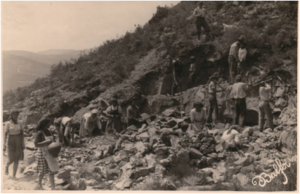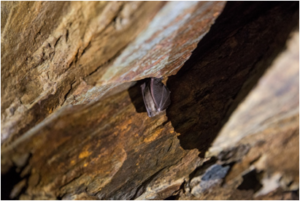Located right next to the centre of Góis, there is a wolfram mine which is currently one of the major interest points in this village. After a long and harsh walk trough Mont Rabadão, visitors can finally reach this mine which, at this time, isn’t working since the decrease of wolfram’s use after the end of World War II. Wolfram is the chemical element from the Period Table whose symbol is W and its atomic number is 74. It is an extremely strong mineral that can resist to explosions and it’s a quite dense material with a high melting temperature.
As a result, during the Second World War, it was commonly used in the machinery industry. In Góis, an Englishman,
named Stanley Mitchell, discovered the mine and started exploring its wolfram. Nowadays, its exploration is no longer profitable, but it is still used for electric filaments and armor-piercing ammunition, as well as hard tungsten carbide machine tools. However, back in the 40’s, it was an exceptionally lucrative business. In fact, this mine was crucial for the village’s economical growth and several inhabitants stopped working in agriculture becoming miners. Consequently, the Portuguese Prime Minister back then, António de Oliveira Salazar, the lieder of Estado Novo (“New State”), actually created laws that forced some workers to return to the fields.
The wolfram’s market was so profitable that miners used to sell this ore illegally, normally to the Germans which were, at the time, Britain’s enemies. According to Jorge Lucas, a collaborator of the city hall, there are quite a few stories about the miners in this village that illustrate that. For instance, there is a story about a worker who extracted wolfram illegally from the mine and had planned to run away with it in a bag. However, by chance, the police was watching his moves. Therefore, he decided to hide the bag in a hole in the river. Unfortunately, he didn’t know how to swim, but in the day after he was able to come back and take it. Like this, there are many other examples that demonstrate the dynamic of this business back in the War Period.
Nowadays, since this activity isn’t productive anymore, there are no plans for starting the wolfram exploration again. Nonetheless, this artificial cave has a lot of potential for eco-tourism. This mine is already included in the project PR5 GOIS, which is a mine’s route set promoted by Góis council. Yet, there are still many other things that can be done to invigorate the tourism in this area. Besides the natural beauty of the place, surrounded by countless native plants, this cave also counts with a huge biodiversity, such as bats. Hence, it can be created an interpretation centre that explains the history of wolfram’s exploration and its importance to Góis economical growth as well as brief explanation about the local flora and fauna.
In summary, this mine is a remnant of the village’s industry during World War II. Although tourism can be more dynamic in this place, pros and cons ought to be balanced so that this inheritance continues to be preserved.
Group 4






You must be logged in to post a comment.